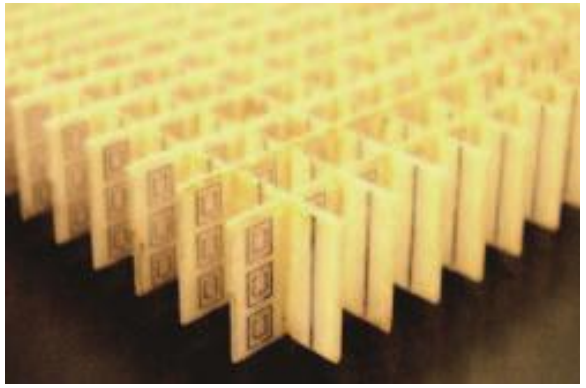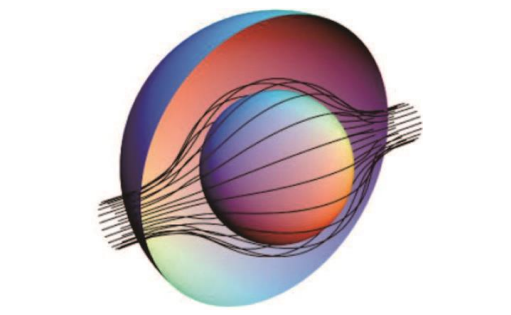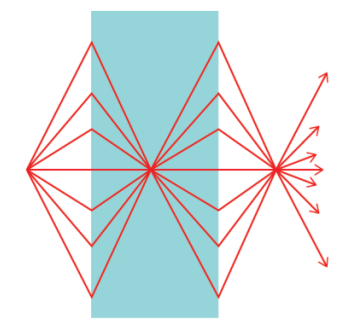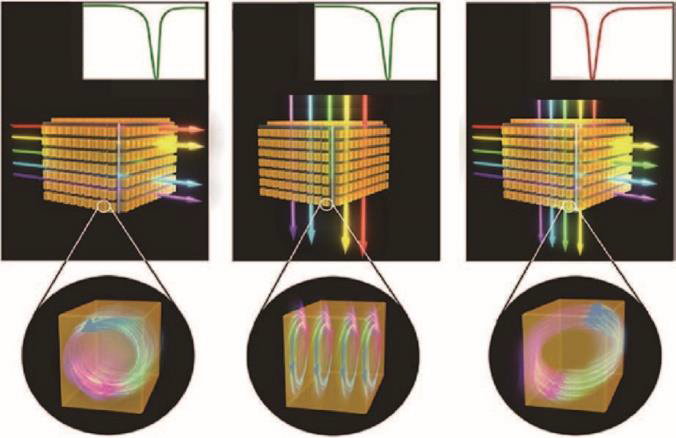《1 Introduction》
1 Introduction
Metamaterial is a new scientific concept developed at the end of the 20th century. Based on this concept, a series of new artificial material systems with unique properties has been developed, and a series of disruptive technologies in many fields has been predicted in the past ten years. Metamaterial technology was one of six major disruptive technologies listed by the U.S. Department of Defense, and has been selected as one of the top 10 advances in materials science over the last 50 years and one of 10 scientific insights of the first decade of the 21st century [1,2].
Originally proposed by Professor Rodger M. Walser, the term “metamaterial” is aimed at describing three-dimensional, periodically structured composite materials not existing in nature [3]. It is believed that a metamaterial (from the Greek word meta, meaning “beyond”) is a material engineered to have a property that is not found in naturally occurring materials. In recent years, scientists have developed metamaterials such as left-handed materials, invisible cloaks, and perfect lenses, and have predicted promising prospects for the fields of optics, communications, military defense and in other applications. A large number of electromagnetic, mechanical, acoustic, and thermal metamaterials have emerged, as well as new materials based on the merging of metamaterials and conventional materials, forming an important starting point for the development of new materials.
《2 Realization of metamaterials: left-handed material as an example 》
2 Realization of metamaterials: left-handed material as an example
Left-handed material is a typical metamaterial. Its invention played a key role in the birth of the concept of metamaterials. The origin of left-handed materials can be traced back to the early work of Veselago, a former Soviet Union scientist, in 1968 [4]. He predicted that if a material has both negative permittivity and negative permeability, the relationship between electric field, magnetic field, and wave vector of electromagnetic waves in the material will no longer follow the “right-hand rule” as shown in classical electromagnetics, but present an opposite “left-hand relation”. The wave propagation direction of electromagnetic waves is opposite to that of energy propagation, and a series of abnormal behaviors, such as negative refraction, abnormal Doppler effect, evanescent wave amplification, perfect lens effect, and abnormal Cherenkov radiation, should occur in the material. However, it is well known that materials with both negative permittivity and negative permeability do not exist in nature. Little attention was paid to Veselago’s prediction for a long time until the work of Pendry, a British physicist, in the mid-1990s, which brought bright prospects for left-handed materials, and finally led to the formation of the concept of metamaterials.
Pendry [5] predicted in 1996 that arrays consisting of metal wires could produce macroscopic anomalous permittivity near the resonant frequency, and then proposed to realize anomalous effective permeability by manually designing metallic split-ring resonator (SRR) arrays [6]. Based on the above ideas, Smith et al. [7,8] fabricated a composite structure of metal wires and SRR arrays using a circuit board in 2000, and a left-handed double-negative transmission band and negative refraction were observed directly (Fig. 1).
《Fig.1》

Fig. 1. Left-handed material based on metal wires and SRR arrays.
The realization of left-handed materials changed some inherent concepts. It showed that “new substances” with physical properties not found in nature can be obtained through the design of artificial functional units, without contravening existing physics laws. From the point of view of material science, the significance of metamaterials goes far beyond several kinds of artificial materials; it provides a reverse design method for material acquisition by design of “artificial material genes”.
《3 Important progress in research and engineering applications》
3 Important progress in research and engineering applications
Remarkable scientific value and revolutionary application prospects for metamaterials have attracted high attention in academic circles, industry, and government all over the world. The U.S. Department of Defense has launched a series of research programs on related research. A few of the largest semiconductor companies in the United States set up a joint fund for R&D on metamaterials. The European Union has organized more than 50 top scientists to focus on this field with high financial support. Japan has launched a research plan to support research on metamaterials technology, costing about 3 billion yen. Research and engineering applications of metamaterials are developing rapidly.
In the field of electromagnetic metamaterials, scientists have proposed various artificial atoms based on metallic and dielectric resonance structures, and have developed invisible cloaks, perfect lenses and other metamaterial-based devices; meanwhile, nanofabrication technology has been utilized to produce optical metamaterials. In recent years, the concept of metamaterials gradually spread from electromagnetics to mechanics, acoustics, thermology, and mass transfer, and a large number of new metamaterials with normal properties and high performance have emerged.
《3.1 Metamaterials invisible cloak》
3.1 Metamaterials invisible cloak
In 2006, Pendry et al. proposed a method to design an invisible cloak based on electromagnetic metamaterials [9]. They pointed out that metamaterials with specific permeability and dielectric constant distribution can control the propagation of electromagnetic waves, making them bend to avoid hidden objects. A device made of such metamaterials can be used to guide electromagnetic waves so as to create the illusion that the object does not exist, and the object placed inside it can be “invisible”. Then Schurig et al. [10] simplified the parameters of the metamaterial, and experimentally verified the creation of a cloak with perfect invisibility. In recent years, scientists have improved and optimized the technology of metamaterial cloaks in order to obtain better performance, a wider bandwidth, and lighter weight (Fig. 2).
《Fig.2》

Fig. 2. Schematic diagram of metamaterial invisible cloak.
Compared with traditional stealth technology, a metamaterial cloak is characterized by guided electromagnetic waves, not by absorbing electromagnetic waves, so it has no target shadow. It could become a disruptive technology in the field of military defense, and much attention has been paid to it by the military forces of many countries. At present, metamaterial cloak technology has begun to be applied in equipment.
《3.2 New passive electronic components based on metamaterials 》
3.2 New passive electronic components based on metamaterials
Electrical and magnetic dielectric materials form the material foundation and core technology of passive electronic components. Traditional passive components are based on conventional dielectric materials. Both permeability and permittivity are positive and greater than 1, and it is difficult to obtain a material with extremely high permeability and permittivity. Metamaterial technology can realize artificial electromagnetic materials with negative, ultra-low or ultra-high permeability and permittivity, which provides the possibility for the emergence of innovative passive electronic components.
An antenna is a well-investigated device for metamaterial applications. With the aid of novel properties and the high designability of metamaterials, new antennas with high performance or special characteristics, such as miniaturization, high efficiency, high gain, conformalization, or high signal selectivity, have been developed. For example, Ziolkowski et al. [11] put forward the concept of metamaterial spatial matching, which can effectively cancel impedance and improve the radiation efficiency of antennas, greatly reduce antenna size, and improve radiation efficiency. With the help of zero-order resonance of composite right-/left-handed structures, the size of the antenna can be arbitrarily small. By utilizing the characteristics of zero refractive index metamaterials, which emit near their normal direction into free space, electromagnetic waves can be effectively converged and the directivity and gain of an antenna can be improved. Metamaterials have been integrated into many antennas in communications devices and other fields.
In the field of passive integration, the author proposed the concept of metamaterial coil-free inductors. Using a flat capacitor structure with negative permittivity material as a dielectric layer to generate an AC response similar to that of an inductor, the problems of complex coil structure of an inductor in a passive integrated module, such as large space occupation, complex fabrication process, and magnetic leakage interference, can be solved.
《3.3 Metamaterial cushion technology》
3.3 Metamaterial cushion technology
Mechanical/acoustic metamaterials have been developing rapidly in recent years due to urgent engineering requirements. Mechanical metamaterials are artificial structures with counterintuitive mechanical properties that originate from the geometry of their unit cell instead of the properties of each component. Typical mechanical metamaterials are generally associated with abnormal Young’s modulus, shear modulus, bulk modulus, and Poisson’s ratio, corresponding to the stiffness, rigidity, and compressibility of the materials [12]. Many applications can be developed based on mechanical metamaterials. One of the successful applications is a cushion to reduce vibration or noise. Many schemes are proposed to reduce vibration and noise with metamaterials. One of them is to introduce the coordinate transformation principle of an electromagnetic wave “invisible cloak” in the range of mechanical waves to wrap the protected object with specially designed mechanical metamaterials, so that the mechanical waves can bypass the object. This idea is also used for earthquake protection in large buildings and cities. In addition, using the combination of a negative Poisson’s ratio and negative stiffness metamaterials, scientists have successfully developed a new type of shock-proof structure which can suppress vibration, to be applied in vehicles carrying premature infants.
《4 Disruptive technologies worthy of attention 》
4 Disruptive technologies worthy of attention
《4.1 Metamaterial lens》
4.1 Metamaterial lens
Metamaterial lens is a typical disruptive technology. The resolution of traditional lenses is limited by the diffraction limit. Optical devices cannot image objects at a scale less than half the wavelength of the light being used. The physical reason is the attenuation of evanescent waves in conventional media. In 2000, Pendry [13] put forward the idea of superlenses based on left-handed metamaterials, and proved that evanescent waves can be amplified in metamaterials so that the information carried by evanescent waves can be propagated in the material. In a slab lens made of metamaterials, the light emitted by the object will be re-assembled after two refractions at the front and back interfaces of the negative refractive index plate, and an image without a diffraction limit can be realized (Fig. 3).
《Fig.3》

Fig. 3. Schematic diagram of metamaterial lens.
Although many design schemes for metamaterial lenses have emerged in recent years, the experimental realization of superlenses in the visible area is still difficult due to the limit of fabrication. In 2015, Sun et al. [14] designed and developed a metamaterial hyperlens which may be used for single molecule imaging and cancer cell detection. It can improve the imaging resolution of optical endoscopy from 10 000 nm to 250 nm or better. Recently, Arbabi et al. [15] developed a new slab lens system which can achieve mass production and be integrated with image sensors. It is expected to be used in miniaturized cameras and microscopes.
Metamaterial lens have urgent requirements in the fields of biology, material science, microelectronics, and optical engineering. Viruses and DNA molecules, cells and the microstructures of various materials can be observed directly in the natural environment. The perfect lens can also realize sub-wavelength photolithography, greatly improving the technology of microelectronics processing, thus extending Moore’s law of integrated circuits.
《4.2 All-optical information components》
4.2 All-optical information components
All-optical photonics is an important direction for the next generation of information technology to break through the physical limit of “Moore’s law” of electronics. Although the principle of the technology has been proposed for many years, it is faced with a series of problems for practical realization. Among them, all-optical switching devices, which are the core components of logical optics, are the key bottleneck. The conventional approach for all-optical switches is by means of optical nonlinearity, which needs a higher driving power and longer response time, because the nonlinear optical process involves a series of structure changes and relaxation processes in the materials. Threshold power and response speed are the main obstacles to the application of all-optical photonics technology.
Metamaterials provide new possibilities for the construction of all-optical switching devices. A design idea for all-optical switching based on mode coupling in metamaterials is proposed by the author [16]. Utilizing multiple resonance modes in dielectric meta-atoms, the modes induced by two electromagnetic wave beams can be coupled in the meta-atoms to change the characteristics of propagation waves in materials, resulting in an all-optical modulation. As the mechanism does not need the participation of non-linear optical processes, the all-optical switching devices have a very low switching threshold and an extremely high switching speed, and the key problems restricting optical switching technology can be solved, thus the bottleneck of all-optical information technology can be broken (Fig. 4).
《Fig.4》

Fig. 4. Schematic diagram of metamaterial all-optical switch.
《4.3 Merging of metamaterials and conventional materials 》
4.3 Merging of metamaterials and conventional materials
Metamaterials are special materials. However, the interface between metamaterials and conventional materials is very clear: the function of metamaterials mainly comes from artificial structure which is completely different from that of conventional materials in nature. The advantages and disadvantages of the two kinds of materials are totally opposite. Conventional materials are easy to obtain, but difficult to design and tailor. Metamaterials are just the opposite, easy to design and tailor, but not easy to obtain. In view of this, the author proposes a concept for the merging of metamaterials and conventional materials, to develop dielectric-based electromagnetic metamaterials, intrinsic metamaterials, and several kinds of metamaterial-based “conventional materials” [17] (Fig. 5).
《Fig.5》

Fig. 5. Merging of metamaterials and conventional materials.
The merging of metamaterials and conventional materials can induce a large number of new materials, which opens up a new pathway for break-through performance limits of conventional materials. The properties of conventional materials mainly depend on their natural structure, such as atomic structure, electronic structure, molecular structure, chemical bonds, crystal structure, or grain-boundary structure. With the progress of material science and technology, the ability to control these structures is gradually enhanced, and the properties of materials can be continuously improved, up to the natural limit of the materials. At the same time, the interaction between natural units and structures also make it impossible to control the properties of materials precisely. Metamaterials are much simpler in structure and can be manipulated easily, so the use of metamaterials is expected to become a way to break through the natural limit of conventional materials.
The merging of metamaterials and conventional materials is also a shortcut to engineering applications for metamaterials. Metamaterials are narrowly defined as artificial materials with properties that conventional materials do not possess. Despite their properties being attractive, the industrialization of these technologies needs a long period of time. On the other hand, metamaterial-based “conventional materials” can be industrialized more easily on the basis of existing industrial technology systems.
《5 Technical obstacles and policy suggestions》
5 Technical obstacles and policy suggestions
The application of metamaterials may lead to technological revolutions in many fields. As a technology in the preliminary stages of development, it deserves close attention. From R&D to the generation of disruptive technologies, many technical obstacles need to be overcome. Attention should be paid to the following aspects:
(1) Metamaterial simulation and design technology. At present, research on metamaterials is mainly based on the exploration of new principles and new functions. Design technology is based on simple models and general simulation software. Actual device design needs to consider a variety of factors, multi-field coupling, and mass calculation. Design technology for special metamaterials still needs further development.
(2) Fabrication technology. Metamaterial fabrication requires precise material processing, especially for electromagnetic metamaterials at high frequency, dependent on the progress of nanofabrication technology.
(3) Engineering feasibility and performance of large size metamaterials. Metamaterials consist of a large number of artificial structural units. The engineering and performance (such as mechanical and thermal properties) of the unit array are key issues for application. For example, to achieve perfect stealth with electromagnetic cloaks, it is necessary to coat them with thick metamaterial “armor”. How to reduce the thickness of the unit array is an important problem.
To promote the development of metamaterial technology, the following suggestions are recommended:
(1) Strengthen R & D investment in metamaterials and its engineering applications. Increase investment in metamaterial R&D in national and local scientific research plans. For metamaterials with a clear technical route and application objectives, initiation of major projects should be considered.
(2) Promote the formation of the metamaterial industry chain. Include metamaterial applications in the industrial development plan of governments to promote the formation of metamaterials industries, the infiltration of metamaterials into areas such as information technology, conventional materials, energy, national defense, military industry and precision instruments.
(3) Pay attention to the merging of metamaterials and conventional materials. Establish a standard system for metamaterials application, encourage the development of new conventional materials based on metamaterials ideas, and promote these metamaterials in traditional industrial fields to form disruptive technologies.
(4) Pay attention to the promotion of metamaterials science. Promote a comprehensive understanding of the scientific concepts and the significance of the value of metamaterials in scientific and technological circles, industrial circles, and society, enhancing the attention and enthusiasm of society for this new disruptive technology.













 京公网安备 11010502051620号
京公网安备 11010502051620号




